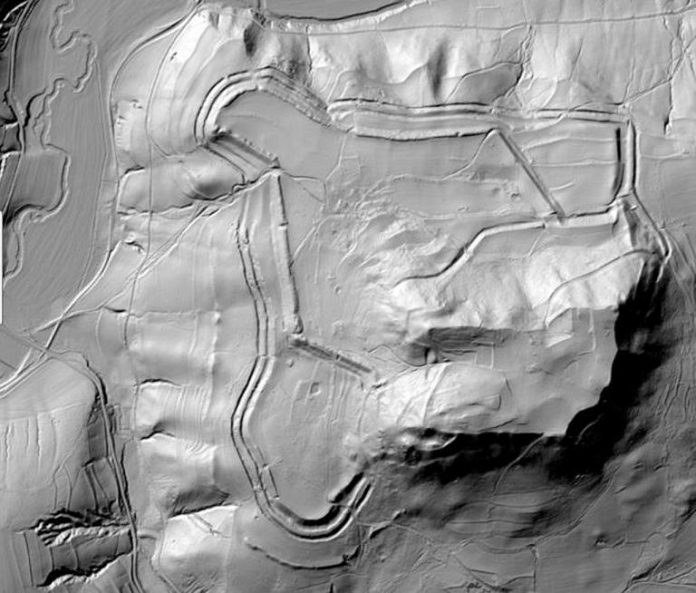If you harbored any doubt that archaeology had entered the digital age, Verde Valley Archaeology Center Executive Director Ken Zoll is here to set you straight.
Beginning Thursday, May 19, a crew of graduate students from Eastern Illinois University and Indiana State University will conduct a four-day geospatial analysis of the VVAC property. The analysis consists of a variety of subsurface tests, including a set of aerial and non-destructive ground-penetrating recordings — including one particularly useful one known as a Light Detection and Ranging survey.
“LiDAR sensors can pierce dense canopy and vegetation, making it possible to capture bare earth structure that satellites cannot see, as well as ground cover in enough detail to allow vegetation categorization and change monitoring,” Zoll stated. “LiDAR involves mounting a laser scanner on a drone to measure the height of points in the landscape below the drone.”
Drones with LiDAR scanners are capable of capturing hundreds of square miles in a single day. Measuring 10 to 80 points per square meter, a detailed digital montage of the landscape is thus created.
Other advanced techniques used by the researchers will allow for the placement of precision markers in the ground, making it possible for future excavation efforts to focus directly on areas of interest.
“The universities were able to obtain grants covering their total expenses,” Zoll added. “The value of these tests are estimated to be about $25,000 if the VVAC had to acquire these services commercially …. The opportunities for students to learn with these investigative techniques is very limited. Commercial archaeological firms use their own staffs for such work. Because the VVAC is a nonprofit research and educational organization, we can provide the opportunity to these students, while at the same time allowing the center to obtain the benefits of their work.”
The property is 15.28 acres and appraised at $1.32 million. Before if was donated to the VVAC, it was being developed for a housing project in Camp Verde. A U.S. Army Corps of Engineers permit was required because the land slopes toward the Verde River and could potentially impact the flow of water and sediment into the river. During the investigation, eight to ten pit houses dating to about 650 A.D. were discovered.
“One pit house was found to contain human remains,” Zoll stated. “This pit house was hand-excavated and the remains removed and reinterred on nearby property donated by the developer. Because of the pit houses, the center became involved and over the course of a year and a half, the property was donated to us.”
After closing on the property in July 2015, Zoll began planning for the building of a collection center, museum, auditorium and classrooms, but the majority of the property will be left undisturbed as he predicts other remains will be found over time.
“This area will be developed as a Native American Heritage Preserve with a trail that will include interpretive signs, benches and ramadas, but no disturbances of the dwellings.”
According to Zoll, in June the VVAC will receive the analysis results in a variety of formats. They will permit him to determine the optimal location for future buildings and minimize the need to disturb ancient American Indian dwellings.
The head researcher of this month’s geospatial analysis, Eastern Illinois University’s Steven Di Naso, will give a presentation of the techniques to be used on the property May 19, 6:30 p.m., in the Camp Verde Town Council Chambers.



